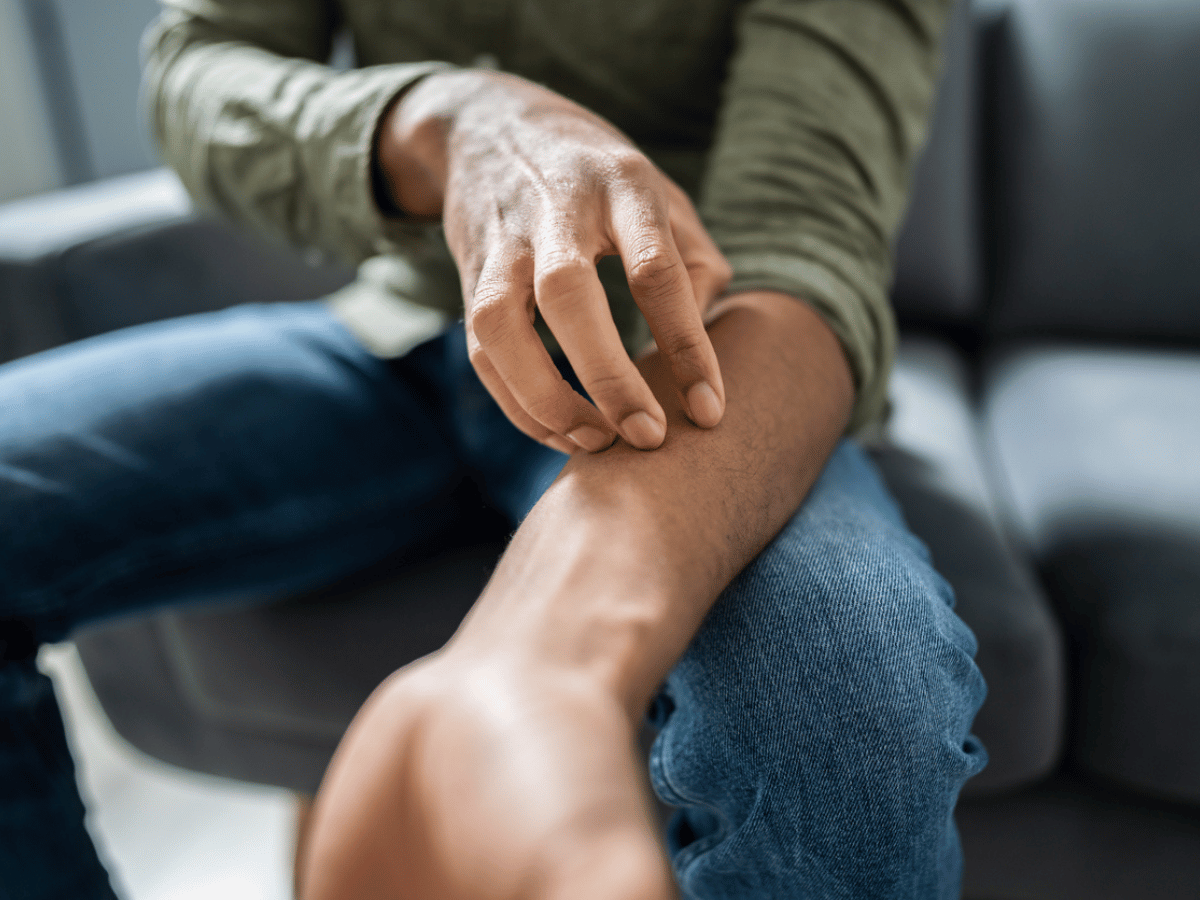What Is Scabies?
Scabies is a highly contagious disease of the skin which can cause intense itching and discomfort. Most cases of scabies occur because of incidental contact. Scabies is attributed to a female mite, which is too small to see with the naked eye. This mite can burrow into the superficial layers of the skin where it thrives. Itching results when our body attempts to eliminate the mite from the skin.
CAUSES
RISK FACTORS
The disease is far more common among groups living in crowded conditions. Scabies is prevalent in nursing homes, daycare centers and those who have close physical contact with others.
SYMPTOMS
The most common symptom of scabies is intense nightly itching. The rash can affect the neck line, fingers, waist line and belly button area. Genitals, breasts, and underarm regions can also be affected. Initially, the rash may present with burning or tingling. Lesions manifest as a small linear burrow. This burrow can be examined under the microscope in order to detect the mite or one of its byproducts. Once diagnosed with scabies, it is important that all family members and close contacts be treated.
FAQs
Is scabies easy to treat?
Yes. Thankfully, treatment today is very safe and effective. The therapy most often employed utilizes a special cream called permethrin. The cream is applied from the neck down and thoroughly massaged into the skin. It is left on overnight and removed the next morning by bathing or shampooing. Repeats treatments can be carried out in 2 to 3 weeks. Resistent cases can be treated with an oral medication called ivermectin.
How long am I contagious after treatment?
The scabies mite does not usually survive the first treatment however, your rash and itching may persist up to 4 weeks after treatment because of your bodies reaction to mite by-products. Sometimes, Dr. Harvey will have patients reapply their prescribed cream a week or two after the first application to ensure that all mites are eliminated. He may also employee a topical anti-itch compound which contains a mild corticosteroid combined with Sarna lotion. This is kept refrigerated to provide a more soothing treatment. Finally, nightly oral antihistamines may be prescribed to help with itching and insomnia. You may return to work after one application of your prescription cream. It is important to let your employer know if you have been treated for scabies so that contacts with other employees can be evaluated. All contacts should be forewarned and, if they have symptoms, they should be examined and treated by a qualified physician.
What else should I know?
- Itching and mild burning may occur after one treatment with your prescribed cream. Typically, itching improves within the first 24 hours after medication application.
- Remember to treat all close contacts at the same time.
- It is important to change all clothes and bed linens and to have affected clothing articles washed at the same time using hot water. Often it is useful to place clothing through an extra rinse cycle to ensure appropriate cleaning. It is usually not necessary to treat sweaters, jackets, furniture, drapes or rugs as the mite cannot survive on these areas for a prolonged period of time.
Our Locations
Visit Dermatology Institute
Our team provides thoughtful, expert care for all your skin health needs. We are proud to offer the most advanced general, surgical, and cosmetic dermatological services in the Newnan and LaGrange areas.

